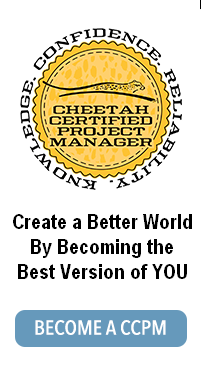Feb 10 – Replace Anger with Awareness

Increase your window of tolerance on the information triggers that make you angry. Your long term brain health depends on this.
Cheetah Certified Project Manager (CCPM) Tip of the Day
February 10 – The first stage of learning is becoming aware of what you do not know. It is often those closest to us who make us aware of what we don’t know (especially teenagers). When you can welcome this dynamic, instead of getting angry, you open yourself up to tremendous growth.
More…..
Michelle LaBrosse, CCPM, PMP, PMI-ACP
Getting angry is a great opportunity for growth. In Dan Siegel’s book on Interpersonal Neurobiology, he shows how our behavior in relationships impacts our long-term brain health. When you can learn how to adopt a curious approach to your emotions, you start to rewire your brain with healthier response patterns. Below is a mind map that shows his concept of windows of tolerance and response flexibility. On the bottom of the chart is a “low self” knee-jerk reaction approach when someone or something “pushes your buttons.”
Information flows in on us all day long. All it is is information. We put the subjective spin on that information – regardless of what it is. We all have unconscious patterns of reacting to information – he calls this “synaptic shadowing.” We all have our standard response patterns to our interpretations of information. Let’s say one of your parents was always late picking you up from school. And now a co-worker is late for a meeting. You might get extremely agitated by this behavior. This means you have a low window of tolerance for other people’s timeliness (or lack thereof). Wherever you have a low window of tolerance, you might have a more chaotic response (you get angry for reasons you don’t feel you can control), or you may fall back into rigid behavior (we close the door to our meetings exactly at the meeting start time and if you’re late, you can’t participate). This is explained in the bar in the middle of the mind map. The goal is to create a wider window of tolerance for how you interpret information. The top part of this chart shows two elements of how to do this. The first is to take a “COAL” approach to any stimulus – that is, you adopt a “curious, open, accepting, and loving” perspective towards yourself about the stimulus. With the response part, where you have an impulse to “do” something, you avoid doing anything. You just “be” with it.
The low window of tolerance with a lack of response flexibility is called being “emotionally immature.” Who the heck as an adult wants to be emotionally immature? The top part of this mind map shows how to adopt a more aware approach to your emotions. Learning how to do this also helps your brain work better. And if you’re aging, it’s a very important thing to pay attention to.
Where do you think this insight could come in most beneficial in your life? Share your insights on the Cheetah Learning Facebook Page

The lower part of this mind map shows how emotional immaturity happens and the upper part shows how to create more emotional maturity and healthier brain patterning


